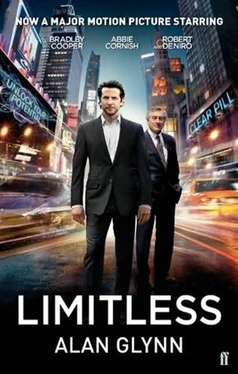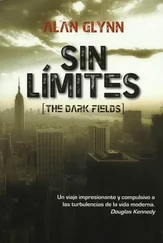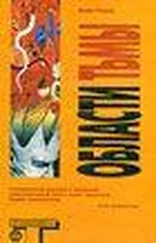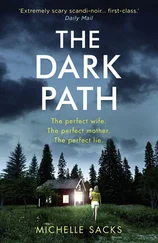I switched on the computer.
Mark Sutton, my superior at K & D, had thrown me the proposal about three months before and I’d been tossing the idea around ever since – circling over it, talking it up to friends, pretending to be doing it, but looking at the notes I’d made on the computer, I realized for the first time just how little actual work on it I’d done. I had lots of other work to do, proof-reading, copywriting, and I was busy, sure, but on the other hand this was exactly the kind of work I’d been nagging Sutton for since I’d started with K & D in 1994 – something substantial, something with my name on it. I saw now, however, that I was in serious danger of blowing it. To do the job properly, I was going to have to write a ten-thousand-word introduction and about another ten to fifteen-thousand words in extensive captions, but as of now, judging by these notes, it was clear that I had only the vaguest notions about what I wanted to say.
I had accumulated plenty of research material, though – biographies of Raymond Loewy, Timothy Leary, Steve Jobs, political and economic studies, design source-books for everything from fabrics to advertising to album-covers to posters to industrial products – but how much of it had I actually read?
I reached over to a shelf above the desk for the Raymond Loewy biography and studied the photograph on the cover – a dapper, moustachioed Loewy posing in his very modern office in 1934. This was the man who had led the first generation of designer-stylists, people who could turn their hands to almost anything, Loewy himself having been responsible for those sleek Greyhound buses of the 1940s, and for the Lucky Strike cigarette pack, and for the Coldspot-Six refrigerator – all of which information I had gleaned from the blurb on the inside flap of the book as I stood in the shop on Bleeker Street trying to decide whether or not to actually buy it. But that information had been enough to convince me that I needed the book, and that Loewy was a seminal figure, someone I’d better bone up on if I intended to be serious.
But had I boned up on him? Of course not. Wasn’t it enough that I shelled out $35 for the damn book in the first place? Now you want me to read it as well?
I opened Raymond Loewy: A Life at the first chapter – an account of his early days in France, before he emigrated to the US – and started reading.
*
A car alarm went off in the street and I endured it for a moment or two, but then looked up – waiting, hoping for it to stop, and soon. After a few more seconds it did and I went back to my reading, but as I refocused on the book I saw that I was already on page 237.
I’d only been reading for about twenty minutes.
I was stunned, and could not understand how I’d gotten through so many pages in such a short space of time. I’m quite a slow reader and it would normally take me three or four hours to read that much. This was amazing. I flipped back through the pages to see if I recognized any of the text and to my surprise I actually did. Because again, in normal circumstances I find that I retain very little of what I read. I even have a hard time following complicated plots in novels, never mind technical or factual stuff. I go into a bookshop and look at the history section, for instance, or the architecture section, or the physics section, and I despair. How is any one person ever again going to be able to come to grips with all of the available material that exists on any given subject? Or even on a specialist area of a subject? It was crazy…
But this – by contrast – this shit was amazing …
I got up out of my chair.
OK, ask me something about Raymond Loewy’s early career.
Like what?
Like – I don’t know – like, how did he get started?
Very well then, how did he get started?
He worked as a fashion illustrator in the late 1920s – for Harper’s Bazaar mostly.
And?
He broke into industrial design when he was commissioned to come up with a new Gestetner duplicating machine. He managed to do it in five days flat. That was in May of 1929. He went on from there and ended up designing everything from tie-pins to locomotives.
I was pacing back and forth across the room now, nodding sagely and clicking my fingers.
Who were his contemporaries?
Norman Bel Geddes, Walter Teague, Henry Dreyfuss.
I cleared my throat and then continued, aloud this time – as if I were delivering a lecture.
Their collective vision of a fully mechanized future – where everything would be clean and new – was showcased at the World’s Fair in New York, in 1939. With the motto ‘Tomorrow, Now!’, Bel Geddes designed the biggest and most expensive exhibit at the fair, for General Motors. It was called Futurama and represented an imagined America in what was a then-distant 1960 – a sort of impatient, dream-like precursor to the New Frontier…
I paused again, unable to believe that I’d taken so much of it in, even the obscure stuff – details, for example, about what was used as fill for the enormous land-reclamation scheme in Flushing Bay, where the fair had actually taken place.
Ash and treated garbage.
Six-million cubic yards of it.
Now how did I remember that ? It was ridiculous – but at the same time, of course, it was fantastic, and I felt extremely excited.
I went back over to the desk and sat down again. The book was about eight hundred pages long and I reckoned that I didn’t need to read the whole thing – after all, I’d only bought it for background information and I could always refer to it again later on. So I just skimmed through the rest of it. When I’d finished the last chapter – and with the book closed in front of me on the desk – I decided to try and summarize what I had read.
The most relevant point I extracted from the book, I think, was about the Loewy style itself, which was popularly known as streamlining. It was one of the first design concepts to draw its rationale from technology, and from aerodynamics in particular. It required that mechanical objects be sheathed in smooth metal casings and pods, and was all about creating a frictionless society. You could see it mirrored everywhere at the time – in the music of Benny Goodman, for instance, and in the swank settings of Fred Astaire movies, in the ocean liners, nightclubs and penthouse suites where he and Ginger Rogers moved so gracefully through space…
I paused for a moment and glanced around the apartment, and over at the window. It was dark and quiet now, or at least as dark and quiet as it can get in a city, and I realized in that instant that I was utterly, unreservedly happy . I held on to the feeling for as long as possible – until I became aware of my own heartbeat, until I could hear it counting out the seconds…
Then I looked back at the book, tapped my fingers on the desk, and resumed.
OK… the shapes and curves of streamlining created the illusion of perpetual motion. They were a radical new departure. They affected our desires and influenced what we expected from our surroundings – from trains and automobiles and buildings, even from refrigerators and vacuum cleaners, not to mention dozens of other everyday objects. But out of this an important question arose – which came first, the illusion or the desire?
And that was it, of course. I saw it in a flash. That was the first point I would have to make in my introduction. Because something similar – with more or less the same dynamic at work – was to happen later on.
I stood up, walked over to the window and thought about it for a few moments. Then I took a deep breath, because I wanted to get this right.
Читать дальше












